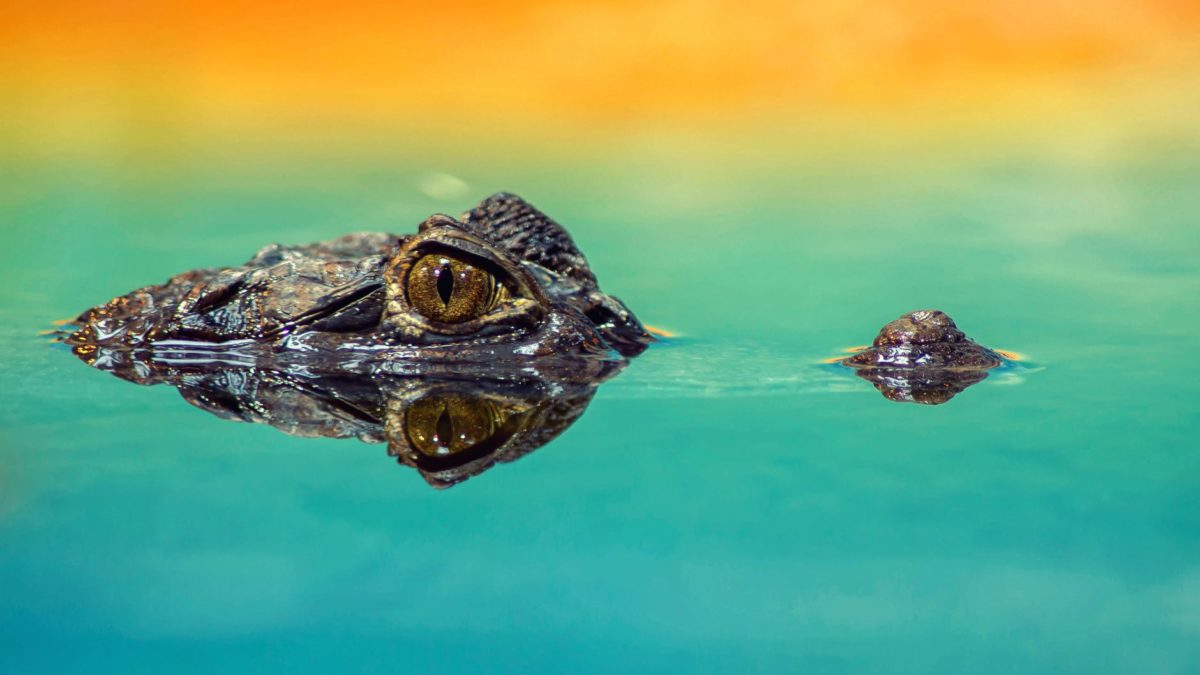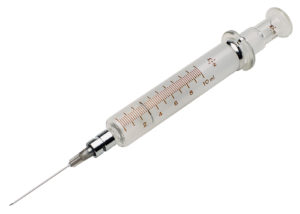What Is the Drug Krokodil Made of

By Efosa Airuehia | 1 Comments | Drugs and Alcohol,
Krokodil (The Zombie Drug): Everything You Need To Know.
Krokodil (The Zombie Drug): Everything You Need To Know.
Krokodil. An interesting name. A dangerous one too! Have you ever heard of this drug? Probably not. Even though it has been on the news and internet for a while, it certainly is not as common as drugs like opioids and benzodiazepines. Nonetheless, this drug is bad news!
"A flesh-eating drug that turns people into zombie-like creatures seems to have made its way to the United States." This was a report made by CNN in October 2013.
You might wonder how the street names of this drug came about. There are a few theories. One theory is that the name krokodil comes from the scaly green skin it can cause in people who use it. This drug is also known as the "zombie drug" because of the flesh-eating effect it produces when injected.
Desomorphine is the chemical ingredient in Krokodil. It is about ten times stronger than morphine!
What is Krokodil (Desomorphine)?
The active ingredient in krokodil is desomorphine, a semi-synthetic opioid. In terms of its effects, it is quite similar to drugs like morphine and heroin. It is made via a chemical process from another opioid. Hence, the term semi-synthetic. The manufacturing ingredient is codeine, an opioid that comes from the opium plant.
Desomorphine was first made in 1932 in the United States by scientists. At the time, the experiment was to test the effects of different types of morphine on mice. The results showed this drug was short-acting, potent, and caused less nausea than morphine.
Studies have shown desomorphine to be up to 10 times stronger than morphine. Even though it is quite strong, its effects only last a short period. This quick action causes people to use more, quickly leading to tolerance and dependence.
This drug was used in Switzerland and Russia to treat severe pain until about 1981. The brand name was Permonid. It, however, disappeared from the market as newer, more effective drugs with fewer side effects came on the scene. Because of its highly addictive properties and numerous side effects, desomorphine is no longer used in medical practice.
Desomorphine was first made in laboratories. Krocodil is the homemade version that contains desomorphine and other impurities. The other components of this drug are due to the different toxic chemicals used to manufacture it in kitchen laboratories.
Street Names
Krokodil is the most familiar street name for this drug. There are a couple of theories as to how this name came about:
- The name originates from a step in the home cooking process. Apparently, in this step, codeine turns into a chemical called a-Chlorocodide.
- This drug damages the skin, leading to ulcers and gangrene. This skin lesion often looks greenish and scaly like the skin of a crocodile.
It is unclear as to which of these theories led to the name krokodil. Perhaps, it is a combination of both. This substance is also known as "Russian Magic" because it works very quickly, but its effects also wear out rapidly. The common street names for this drug are:
- Krokodil
- Crocodil
- Zombie Drug
- Russian Magic
- Crocodile
- Poor Man's Heroin
- Gator Drug
- Flesh-eating Heroin
- Cheornaya (in Russia)
- Himiya (in Ukraine)
A Little Statistics
"Drug overdose is the leading cause of accidental death in the U.S, with 52,404 lethal drug overdoses in 2015. Opioid addiction is driving this epidemic, with 20,101 overdose deaths related to prescription pain relievers, and 12,990 overdose deaths related to heroin in 2015." This is according to the American Society of Addiction Medicine (ASAM).
It is, however, unlikely that krokodil affects these above numbers significantly in the U.S. Despite this, it remains essential to be on the alert for this drug.
How is Krokodil made?
Even though desomorphine was initially synthesized in labs, people have been making it at home! Scary stuff!! Producing krokodil in kitchen laboratories requires drugs containing codeine, and little or no equipment. The entire process takes less than an hour.
 Manufacturing krokodil involves mixing codeine with products like gasoline, battery acid, paint thinner, lighter fluid, iodine, hydrochloric acid, and even the red tips from matches(phosphorus). The combination of these is then heated up. This heating process is known as "homebake."
Manufacturing krokodil involves mixing codeine with products like gasoline, battery acid, paint thinner, lighter fluid, iodine, hydrochloric acid, and even the red tips from matches(phosphorus). The combination of these is then heated up. This heating process is known as "homebake."
As a result of the illicit, home-based manufacturing, krokodil may contain other unknown ingredients. These additional components make it even more dangerous to use. Moreso because injecting is the primary method of using this drug. The product of the home manufacturing process is a liquid that is yellowish to light brown. It has a strong acid-like smell. This homemade process is similar to the "cooking" process of illicit methamphetamines.
An inexpensive alternative to heroin, krokodil is not only cheaper but also easier to obtain. It is potent, not just because of its active ingredient, but also due to the toxic chemicals used to make it. In spite of the dangers of using this substance, its use remains widespread in some countries.
Is Krokodil Addictive?
Yes, it is!
Desomorphine is classified as a Schedule I Substance in the United States. This classification means that it has a high potential for abuse and no use in medical practice. The primary method of abusing this drug is by injecting it into the veins (intravenous injection). Some reports have, however, shown that some people consume this substance by mouth. Addiction to this drug is known to occur quite quickly.
In places where desomorphine is rife, the switch from heroin to this drug is mostly due to two reasons. Cost is the first reason. Addiction to any drug can be an expensive habit. When people addicted to heroin can no longer afford their drug of choice, a cheaper alternative becomes attractive. This switch is in spite of the possible risks with the less expensive substance. Reports indicate that krokodil is about one-tenth the price of heroin in some localities. Secondly, the unavailability of heroin in some countries has caused people to consider krokodil, which is more accessible.
A study shows that the life expectancy of a heroin user in Moscow is about four to seven years. On the other hand, it is only one to two years for users of krokodil. Sad. And scary!
How Quickly does Krokodil Act?
The abuse of krokodil was first observed in Russia in 2002. The use of this substance escalated when heroin became scarce. Krokodil became an alternative because it was cheaper and more readily available. Even though abusing it is mostly by injecting it into the body, some people also consume it by mouth.
 It acts very quickly but also wears out fast. Reports show that its effects can come on within two to three minutes of consumption. These effects, however, only tend to last about two hours. The short duration of action contributes to the addictive potential of this drug.
It acts very quickly but also wears out fast. Reports show that its effects can come on within two to three minutes of consumption. These effects, however, only tend to last about two hours. The short duration of action contributes to the addictive potential of this drug.
The short duration of action means people can quickly develop tolerance because they keep using to get the effects of the drug. Also, to avoid withdrawal symptoms, they need to continue to use the drug.
What are the Effects of Krokodil?
Some reports have shown desomorphine to be about ten times more potent than morphine, but also three times as toxic. There are short-term and long-term effects of using this substance.
Short-Term Effects
The short-term effects of this drug include:
- Feeling "a high" (euphoria)
- Breathing problems – usually shallow and slow breathing
- A calm and relaxed feeling
- Swelling at the site of injection
- Pain at the site of injection
Long-Term Effects
The long-term effects of this drug include:
- Difficulty sleeping
- Fatigue
- Memory problems
- Slurred speech
- Severe damage to skin and muscle
- Blood vessel damage
- Discolored skin (green, grey or black)
- Infections
- Physical dependence
- Psychological dependence
- Blood clots
- Meningitis
- Gum disease and loss of teeth
- Ulcers
- Limb amputations
- Pneumonia
- Meningitis
- Decreased sex drive
- Blood poisoning (septicemia)
- Bone infections (osteomyelitis)
- Kidney and liver damage
- HIV and hepatitis from sharing needles
- Death
How Quickly does Skin Damage Occur?
The skin and blood vessel damage from this substance is thought to occur quite quickly. According to some reports, such issues can begin after just one injection of this drug. These skin lesions are probably more likely to occur with poor injection techniques. Also, the ingredients used to produce krokodil at home are toxic to the body. Krokodil blocks the small blood vessels in the skin, and this cuts off the blood supply.
This process can lead to infections, necrosis, gangrene, and even result in that portion of the arm or leg being cut off (amputation). Damage to other body organs and the central nervous system also occur. There are variations in potency of desomorphine as a result of differing homemade recipes. These differences can increase the risk of an overdose.
Identifying a Krokodil User
Quite a few foreign countries have reports of widespread use of this drug. Most of the individuals are young. Some common presentations of abuse of krokodil include:
- Sleeping excessively
- Extreme fatigue
- Missing work or school
- Losing friends and isolating
- No longer participating in previous interests
- Lack of interest in sex
- Stealing to fund their drug habit
- Legal problems from possession and intoxication
For various reasons, people who use this drug tend to delay getting medical help. When they eventually present to a healthcare professional, they show up with symptoms such as:
- Skin ulcers and gangrene
- Bone infections
- Rotting gum
- Loss of teeth
- Sores on the forehead
- Rotting ears, nose, and lips
- Decaying jaw bones
- Liver failure
- Kidney failure
Why Crocodile Skin?
Due to the increase in the use of krokodil, Russia banned over-the-counter codeine in 2012. This restriction helped curb the spread of desomorphine use. One of the fascinating effects of this drug is the damage it causes to the skin. This tissue damage, necrosis, and gangrene highlight the toxicity of this drug. The resulting damage causes discoloration and change in the texture of the skin. Color changes to green, grey and black hues with the altered texture have led to descriptions of "crocodile skin." Also, as this damage progresses, the skin begins to fall off. Krokodil is thus known as a flesh-eating drug for a good reason.
The "zombie" description is likely due to the short half-life of this substance. This property makes the individual always focused on getting the ingredients, manufacturing, and consuming the drug. They do this not just for the high, but also to avoid the withdrawal symptoms. This focused behavior of continuous use has lead people to describe this drug as creating "zombies."

Injection of any drug can cause some damage to the skin. This issue can be as a result of the toxic ingredients of the substance. It may also be due to poor injection techniques. With krokodil, however, the skin ulcers tend to be far more severe. This severity is not surprising considering its ingredients may also consist of battery acid, petrol, paint thinner, or hydrochloric acid.
The delay in getting treatment, unfortunately, makes the skin damage worse. Better control of the infection happens if caught early. It is also essential to follow up regularly with treatment. A lack of management has seen some people have rotting skin, which gets to the bone. Such damage can lead to the amputation of the limb.
Why the Switch from Heroin to Krokodil?
Some reports document a scarcity of heroin in Russia in 2003. This unavailability was apparently due to a ban. The restriction of heroin into Russia from Afghanistan caused an increase in the street price for heroin. Because of this, heroin users resorted to cheaper substitutes like desomorphine. This abuse is despite the risks associated with this substance.
For years, Afghan heroin had been the drug of choice in countries like Russia and Ukraine. There was, however, a sharp decline in Afghan opium in 2010. This scarcity was apparently due to a plant fungal disease. As a result, opium production was almost 50 percent lower than the year prior. This shortage led people to consider a cheaper alternative to heroin, hence the widespread use of krokodil in those regions.
Is Krokodil Available in the U.S.?
The use of this drug has been predominant in Russia. There have also been reports of its use in Switzerland, Ukraine, Georgia, Kazakhstan, Norway, and Germany. Aside from these countries, there are a few reports in countries like Australia, Canada, and the United Kingdom.
Codeine, the ingredient used to make krokodil, is a controlled substance in the U.S. As would be expected, this makes it less likely for people to manufacture this drug. Even though krokodil use was rife in countries like Russia, there were no concerns of cases in the U.S. Until September 2013, when a poison control center in Arizona received a call about krokodil. There were also some reports from Oklahoma and Illinois. In October 2013, the Drug Enforcement Agency (DEA) however, stated it was unlikely krokodil was in the U.S.
Over the last few years, there have been mentions of this drug in the U.S. One thing is for sure, though. It is not currently an epidemic in the U.S. Having said that, a genuine concern is that some users in the U.S. may buy krokodil, while under the impression that they are buying heroin. The ready availability of drugs over the internet certainly does not help!
Why is Krokodil not Widespread?
Krokodil does not seem to be a concern in the U.S. at this time. Great news! But why is that? You would think abuse of this cheap and potent drug would be widespread. Thankfully, it is not.
Some of the most prevalent drugs abused in the U.S. are heroin, methamphetamine, cocaine, and prescription drugs. It is unlikely krokodil will become widespread in the U.S. There are a few reasons for this.
Firstly, other drugs of abuse are relatively cheap and readily available. Hence, there is no attraction to switch to desomorphine. Heroin remains affordable and easy to obtain. Secondly, the thought of using dangerous chemicals like gasoline, hydrochloric acid, and other toxins is scary for most people. Also, people are aware of the extreme toxicity of krokodil, especially its effects on the skin.
We hope that the above reasons are enough to keep people away from this dangerous substance. Concerns of possible spread remain an issue, however, with the low cost, potency, and ease of manufacture. Let us hope it never happens!
Treatment of Krokodil Addiction
Like we talked about earlier, krokodil use is uncommon in the U.S. It is, however, essential to be aware of proper treatment for this addiction.
Considering that desomorphine is an opioid, treatment would be similar to that of other opioids. Medically supervised detoxification is vital to help with the withdrawal symptoms. Buprenorphine, clonidine, and lofexidine are medications that help with detox. Medication-Assisted Treatment (MAT) is the gold standard for long-term treatment of opioid use disorders.
Medications approved by the FDA for the treatment of opioid use disorders are:
- Buprenorphine
- Methadone
- Naltrexone tablets
- Naltrexone injection (Vivitrol)
Therapy is an essential complement to prescribed drugs. These counseling sessions may be group therapy, individual therapy, or both. There are two commonly used behavioral therapies for opioid use disorders:
- Cognitive-Behavioral Therapy
- Contingency Management
It is also imperative to treat co-occurring mental illness. Some people use drugs to cope with depression, anxiety, post-traumatic stress disorder, bipolar disorder, schizophrenia, and other mental issues. Antidepressants, antianxiety medications, mood stabilizers, and antipsychotics can help with these disorders. For treatment to occur, however, these ailments first have to be diagnosed. Treating underlying mental conditions yields a better prognosis for drug addiction.
Conclusion
Krokodil is a semi-synthetic opioid that contains desomorphine and other toxic chemicals. It is about ten times stronger than morphine, and home manufacturing is rife. It is very cheap and the ingredients to make it are readily available. In several countries, abuse occurs as a cheaper alternative to heroin.
Desomorphine is highly addictive. It works quickly and also has a short duration of action. People make this drug in kitchen laboratories by mixing over-the-counter codeine medications with other substances like battery acid, paint thinner and hydrochloric acid.
Krokodil has many adverse effects on the body, including severe skin loss. Some people have had limb amputations due to the toxicity of this substance. The average life span of people who use krokodil is about two years only!
At this time, krokodil addiction does not seem to pose much of a concern in the United States. There is no doubt though that this is a drug that is common in some other parts of the world. The consequences are devastating, unfortunately. The ease of obtaining drugs on the internet, however, means this drug remains an international concern.
Stay away from this poison!
Leave a comment on your thoughts about this drug. Share this story to alert people of the dangers of this flesh-eating substance. To get updates on our future articles, join our email list.
What Is the Drug Krokodil Made of
Source: https://addictionblueprint.com/blog/krokodil-the-zombie-drug-everything-you-need-to-know/
0 Response to "What Is the Drug Krokodil Made of"
Post a Comment